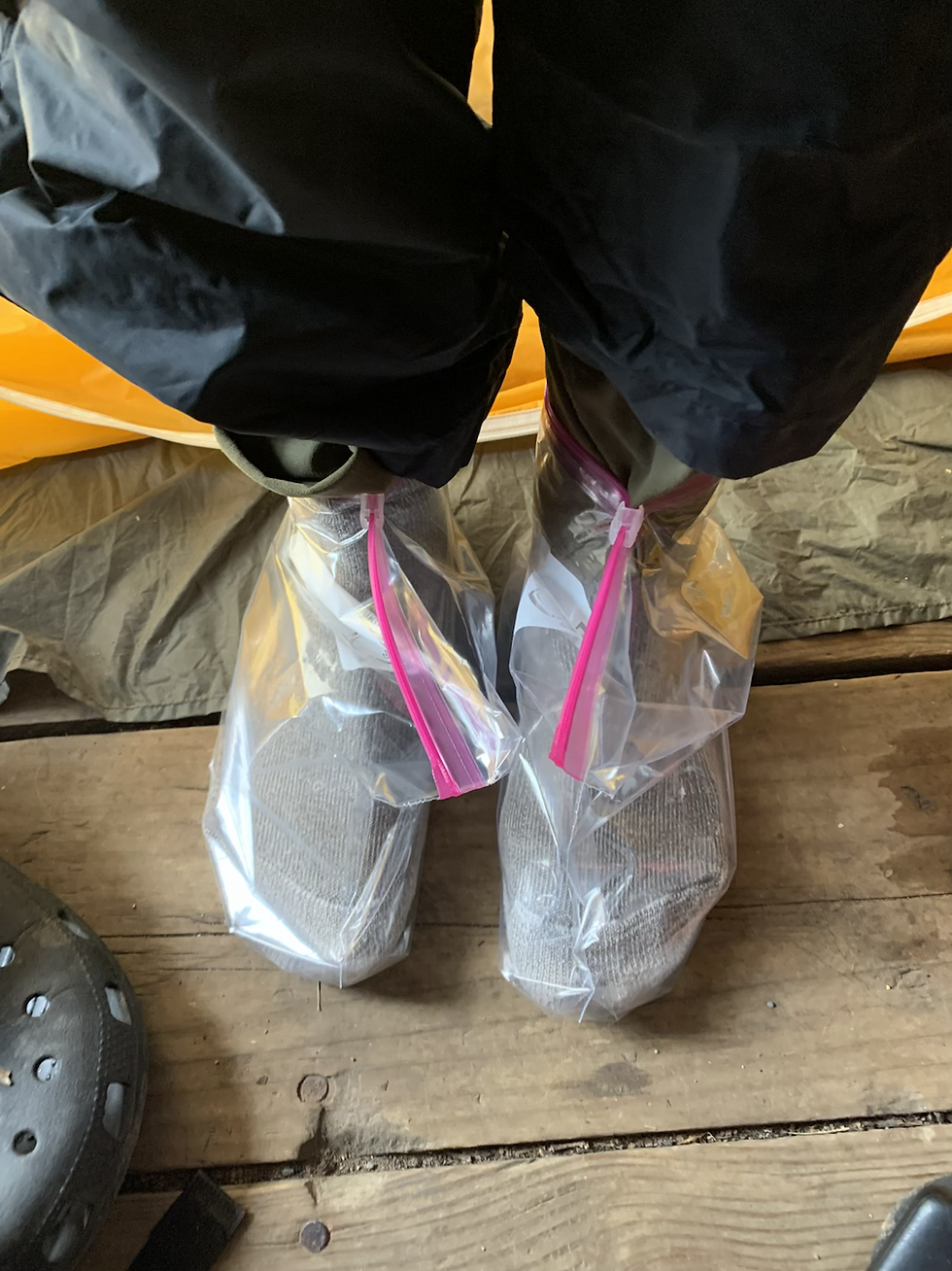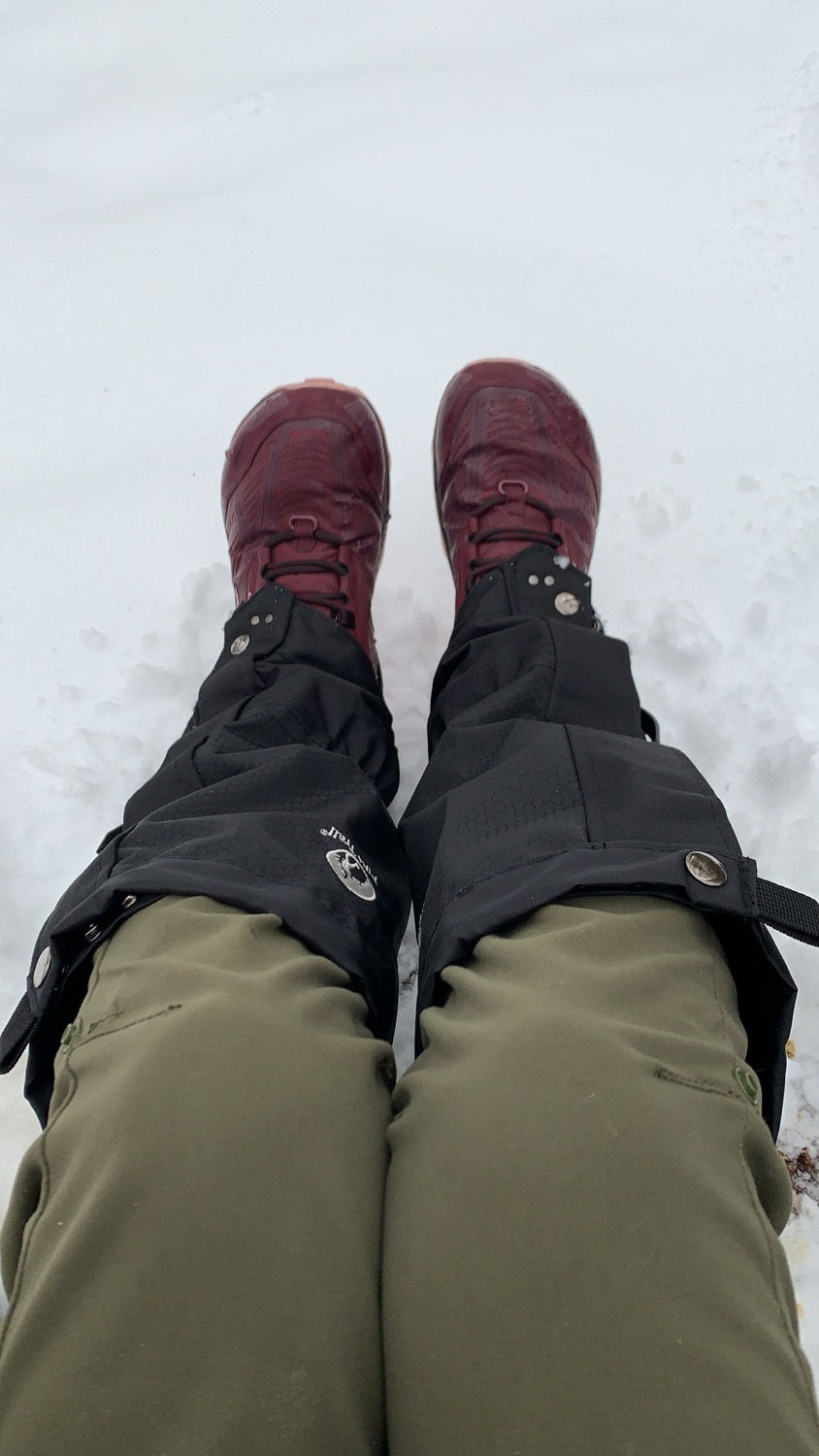Top Winter Backpacking Tips (Foot Edition)
- Cassandra Smith

- Jun 17, 2021
- 5 min read
Saving you some time, sanity, and feeling in your toes- learn from my mistakes and what took me a few weeks to learn while in the midst of a wet, snowy Appalachian winter.
In the video above I just finished panicking because my foot was so cold for so long I thought the skin of my foot had frozen to the inside of my boot. Turns out it was just my sock although I ripped it trying to pull it out.
1. Sleep with your boots in your sleeping bag
Easily the most annoying tip, but the most helpful in my opinion. If you have horrible extremity circulation as it is (like me), putting your feet into frozen boots first thing in the morning will quickly turn your day into a disaster. I can't count the number of times I either forgot or was too lazy to knock all of the snow off my boots in the vestibule, dry them off as best I could with my towel, fill them with newspaper (see below), stick them in a grocery bag and shove them in the bottom of my sleeping bag at my feet. The next morning I would wake up, realize my mistake and groan.
It would take my feet hours and hours to warm up while hiking (or they just never would). I remember multiple times on trail when I would set my timer on my phone while I was hiking. When my toes hit a certain point of numbness I would set a timer on my phone for 20 minutes. If they weren't any warmer when that timer went off, I would force myself to pull off my boots and warm my toes up with a handwarmer.
If it was extremely cold out at night, there were occasions when I would slip off my boots after climbing in the tent and by the time I had my warm clothes on and sleeping pad blown up, my boots would be frozen solid in the vestibule due to the sweaty interior and snowy exterior. I would then have to fire up my stove and carefully hold them over the flame to melt them before sticking them in my sleeping bag, or they would never thaw by morning.
Yummy, nothing like a Hoka trail runner for dinner (melting Cobra's frozen shoe so he could put it back on his foot)
2. Carry an insane amount of socks & newspaper
I really wish I would have learned this earlier. Being picky about pack weight in the winter wasn't an option for me. We were in Damascus after a particularly cold stint through the Grayson Highlands where I thought I'd surely lose at least a few of my toes. I walked straight into an outfitter after this and bought 5 new pairs of merino wool socks. Before this I had been switching between two pairs of hiking socks. Trying to dry them as best I could at night by sleeping with them next to my body heat, but they were always at least a little damp. A little damp in 0 degree wind-chill is a recipe for disaster I quickly learned. I carried six pairs of socks, enough to have a completely, totally dry pair every morning before we started out and it made a huge difference in how warm my feet stayed throughout the day.
Why newspaper you might ask? I learned this trick from my pap back in the day of going out deer hunting in the winter. Shoving wadded up newspaper as tight as you can into the inside of your boot and leaving it overnight will help soak up any moisture caused by sweat or melted snow. This paired with keeping my boots inside my sleeping bag at night prevented them from freezing and also helped to soak up any moisture so they wouldn't freeze as easily the next morning when I'd get back at it.

Gallon ziplocs work great as a waterproof barrier when hiking in snow. This was before I picked up my waterproof boots and we had an unexpected snow. Your feel will sweat more but they will be warmer!
3. Toe Warmers. Period.
There got to a point on trail when I would've refused to leave town if I didn't have at least 10 toe warmers in my backpack. It was a terrifying thought for me to run out while we were on trail because they were literally the only thing that saved my toes countless times. There was a section of trail where we must have bought a defective pack and my heart pounded in my throat when I realized it. I tore open pack after pack only to find that they would never get warm and I actually thought about turning around and hiking the fifteen miles back to town. Luckily, after the first two days of this section the sun came out and a lot of the miles we walked were snow free (thank you Trail Gods).
*Note*- toe and hand warmers do not work when wet. Once you open the package and they warm up you must keep them as dry as possible or they will quickly lose their heat.
This was another reason a dry pair of socks every morning was absolutely imperative for me. Each morning as soon as I woke up I would rip open a pair of toe warmers and stick them in my puffy pockets to warm up so when it was time for me to crawl out of my sleeping bag and get dressed, they were nice and hot and I could stick them on the outside of my fresh socks and immediately stick them in my boots so the cold air couldn't get to them first.
Then every night I would repeat. As soon as I plopped my sorry, tired ass down in the tent at night, I cracked open a fresh pair of toe warmers (they only last about 6 hours if you're lucky) and put this pair on my sleep socks and inside my down booties. (Post on winter footwear gear specifics coming soon).
Frozen shoes because I was lazy and didn't stick them in my sleeping bag, yay me :-)
4. Waterproof socks are not waterproof
If you're experienced at backpacking at all you know not much actually is waterproof. But in case you had any doubts about waterproof socks- I'm here to tell you. Nah, girl. They aren't waterproof either. I thought maybe, even though they weren't waterproof that the neoprene like material would at least be insulating but I found that to be untrue also. My merino wool socks kept my feet much, much warmer on snowy, wet days than the waterproof socks did. I eventually just gave up and sent them home.
A bridge had washed out in southern VA and we had to ford. The coldest water I've ever experienced in my life.
5. Bernese Mountain Dogs make great toe warmers :-)

6. Snow gaiters are a life saver
It's sad how long it took me to learn this (LOL). Waterproof boots don't do much good when snow is falling into them from the top. From southern Virginia to southern Tennessee we were often hiking in deep snow, sometimes up to my hips, but most of the time at least ankle to shin deep. It is impossible to keep your feet somewhat dry and warm in these conditions unless you have something to block out the snow from falling down the top of your boots. I bought a cheap(ish) pair off Amazon and the under-boot strap unfortunately didn't last long with all day everyday use. I had them taped and knotted and they very barely made it to Gatlinburg. I eventually picked up a pair by Outdoor Research that were much better quality.





Comments